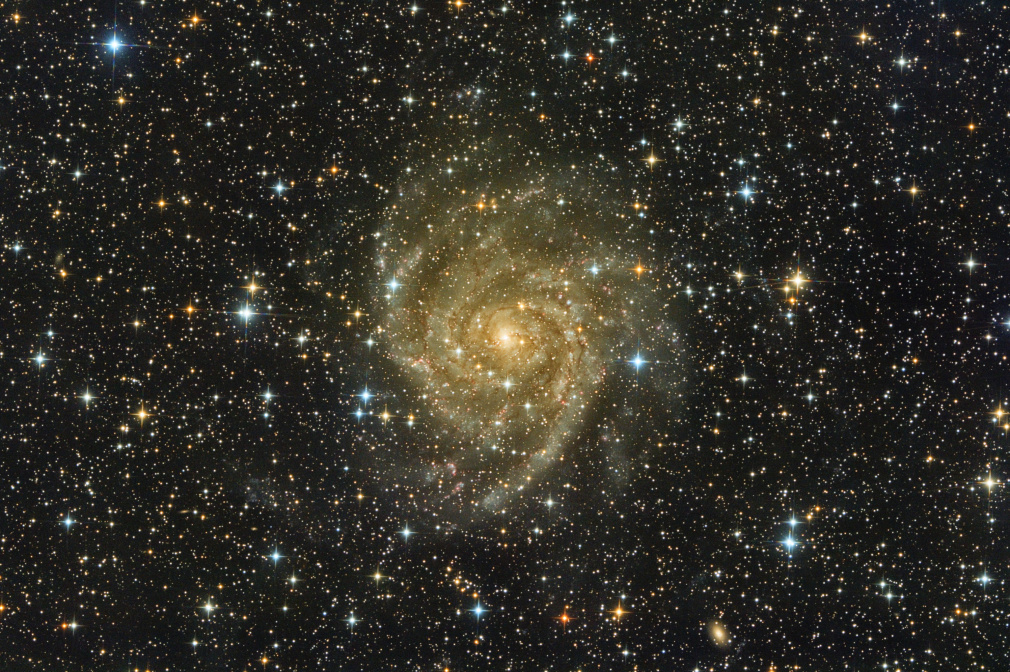The Hidden Galaxy (IC 342) got its name for a reason. According to its absolute brightness, size and distance it should appear much brighter on the night sky, actually so bright that Messier should have been able to spot it, yet it managed to remain undiscovered for a long time.
It was discovered by the British amateur astronomer William Frederick Denning in 1895. Denning - like Messier - was focusing on discovering and observing comets, and despite the fact he did not get astronomical education he published more then a thousand articles in prominent scientific journals, and received awards from multiple scientific organisations. His efforts in comet-hunting were not without results either, as he discovered several comets.
The galaxy located in Camelopardalis (the Giraffe) has an apparent dimension of about 20 arcminutes, which is 2/3rd of the size of the Full Moon. Measuring on astronomical scales it is so close to us, that it was assumed to be a member of the Local Group of galaxies. This motivated Hubble to determine the distance of IC 342 more precisely. The results showed that the initial approximations were inaccurate, and the galaxy can't be a member of the Local Group because it is farther than that. According to even more precise measurements the distance of IC 342 is about 10 million light-years, and it forms a group with Maffei I and Maffei II galaxies and a couple of other dwarf galaxies, all being in the close vicinity of the Local Group. The neighbour group was named IC 342 / Maffei I group after the two largest galaxies in it.
The Hidden Galaxy is almost a perfect face-on galaxy, meaning our view-angle is almost perpendicular to its plane of rotation, therefore the apparent shape of it is not an elongated ellipse but an almost perfect circle. Close face-on spiral galaxies provide good opportunities to examine the structure of the arms. The Hidden Galaxy's morphological classification is SAB(rs)cd. The mysterious code means it is an intermediate spiral galaxy being between non-barred and barred states (SAB), the next part (rs) refers to a galaxy in transition between not-having and having ring-like structures. The last part of the classification (cd) tells us that it has loosely wound arms. Another prominent example of SAB(rs)cd galaxies is The Pinwheel Galaxy (Messier 101).
The reason why IC 342 could remain undiscovered for so long, and why it deserves the name the Hidden Galaxy, is very simple. The direction to the Hidden Galaxy is very close to the rotational plane of our own galaxy, the Milky Way. In the rotational plane of our galaxy a lot of stars and cosmic dust- and gas clouds are concentrated, they together absorb and scatter a portion of light coming from object behind them, including the light coming from IC 342, and only a part of the light of those objects is reaching us, and even the colour is changed a bit. Like on a foggy&smoggy day when the brightness of Sun is reduced enough to be safe to look into it with the naked eye.
Actually the Hidden Galaxy is hiding behind the skirt of the Milky Way.
